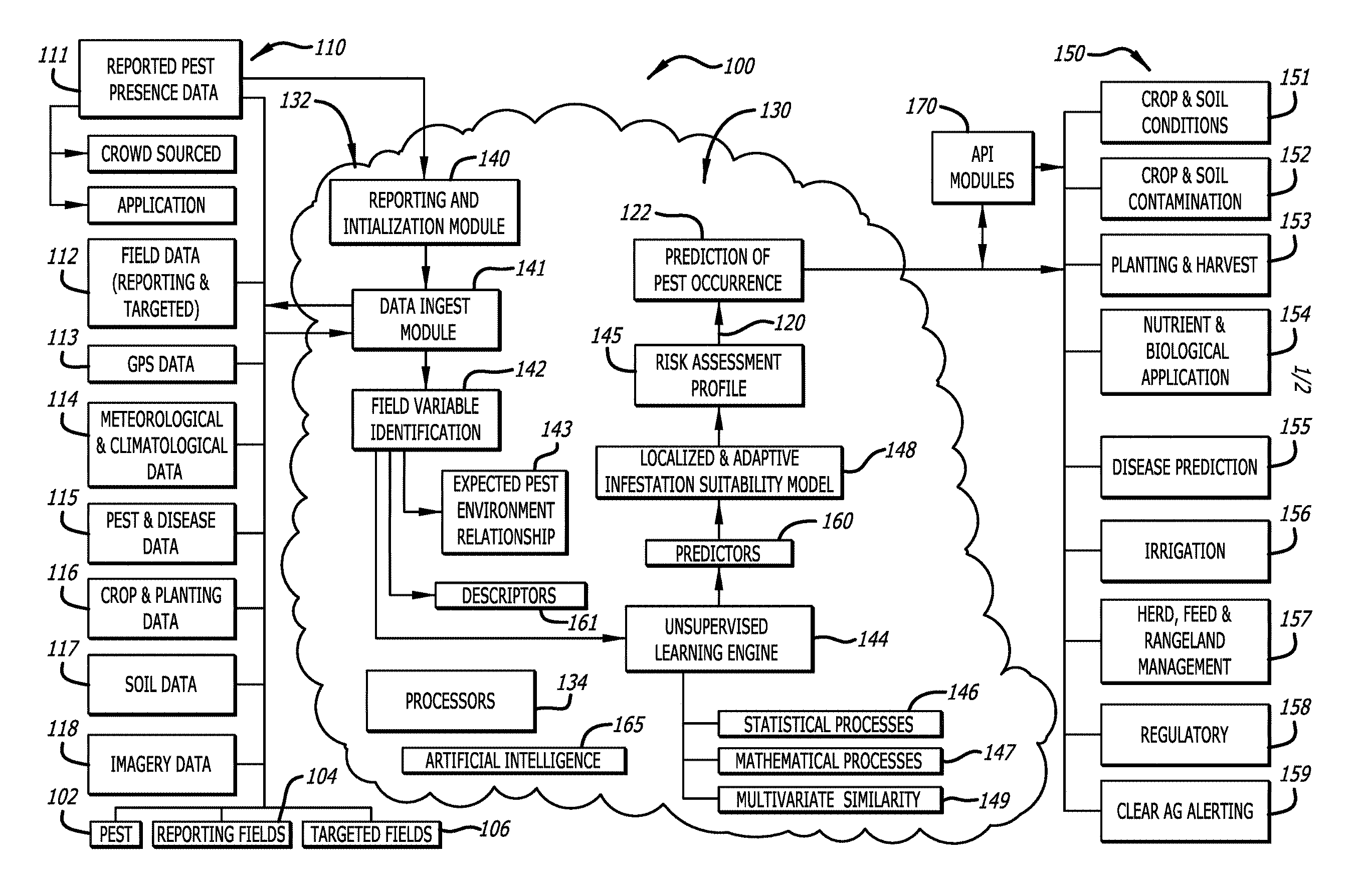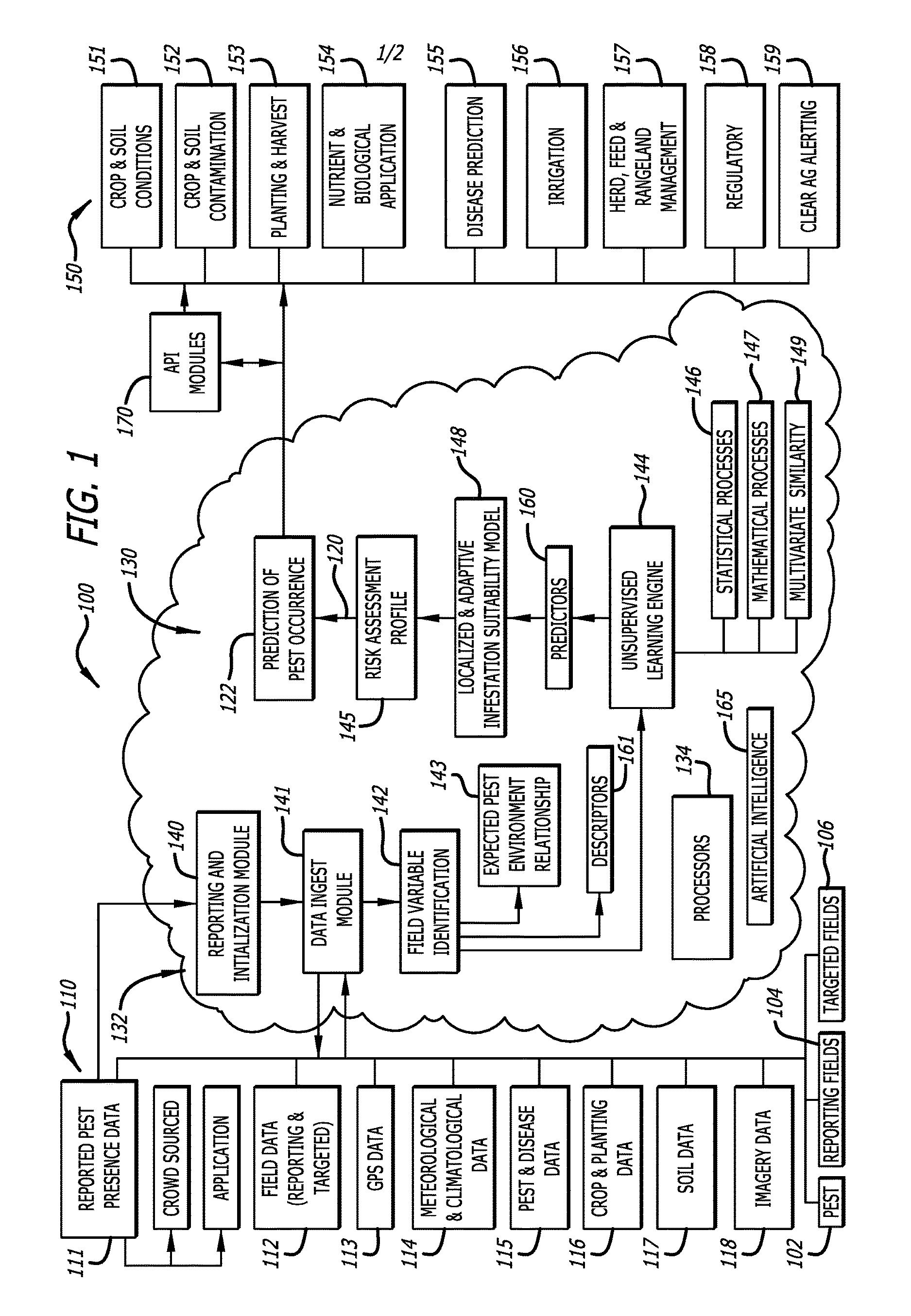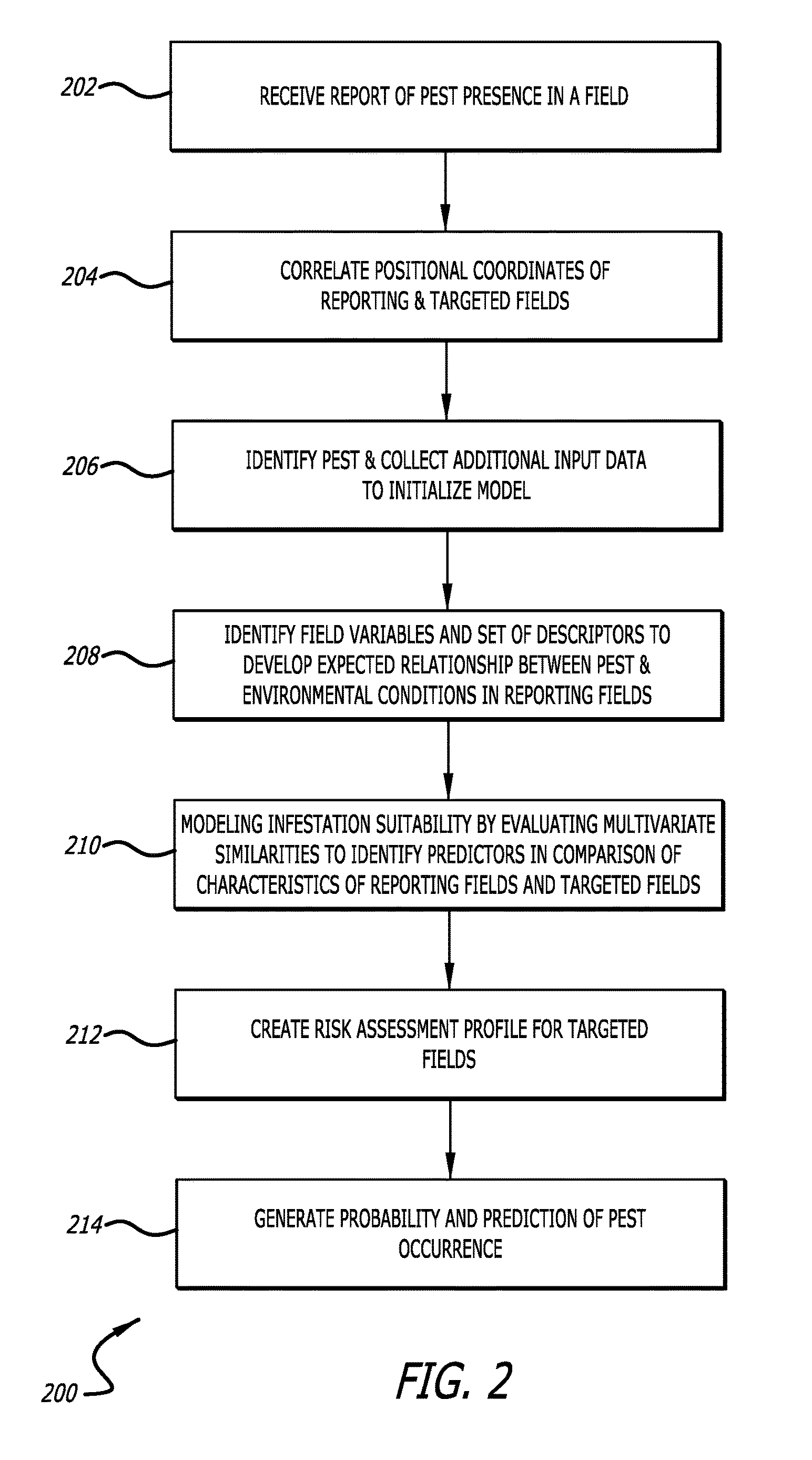Pest occurrence risk assessment and prediction in neighboring fields, crops and soils using crowd-sourced occurrence data
a technology of pest occurrence and risk assessment, applied in the field of assessing and predicting an occurrence of pests can solve the problems of few weather-driven pest or disease models available for management decisions, constant problems in fields, crops and soils, weeds, insects, etc., and achieve the effect of improving its predictive capabilities
- Summary
- Abstract
- Description
- Claims
- Application Information
AI Technical Summary
Benefits of technology
Problems solved by technology
Method used
Image
Examples
Embodiment Construction
[0019]In the following description of the present invention reference is made to the exemplary embodiments illustrating the principles of the present invention and how it is practiced. Other embodiments will be utilized to practice the present invention and structural and functional changes will be made thereto without departing from the scope of the present invention.
[0020]FIG. 1 is a system architecture diagram for a crowd-sourced pest and disease model 100 for predicting a presence of, and profiling a risk assessment for, a pest or disease 102 in a particular, or targeted field 106, according to one embodiment of the present invention. The crowd-sourced pest and disease model 100 is performed within one or more systems and / or methods that includes several components, each of which define distinct activities required to apply real-time, field-level observations representative of a pest presence in a reporting field 104, localized weather conditions, together with long-range climat...
PUM
 Login to View More
Login to View More Abstract
Description
Claims
Application Information
 Login to View More
Login to View More - R&D
- Intellectual Property
- Life Sciences
- Materials
- Tech Scout
- Unparalleled Data Quality
- Higher Quality Content
- 60% Fewer Hallucinations
Browse by: Latest US Patents, China's latest patents, Technical Efficacy Thesaurus, Application Domain, Technology Topic, Popular Technical Reports.
© 2025 PatSnap. All rights reserved.Legal|Privacy policy|Modern Slavery Act Transparency Statement|Sitemap|About US| Contact US: help@patsnap.com



